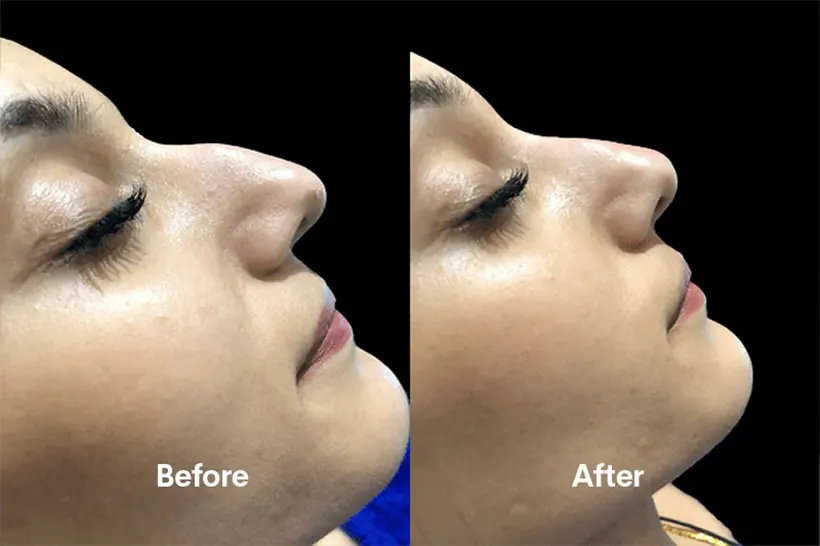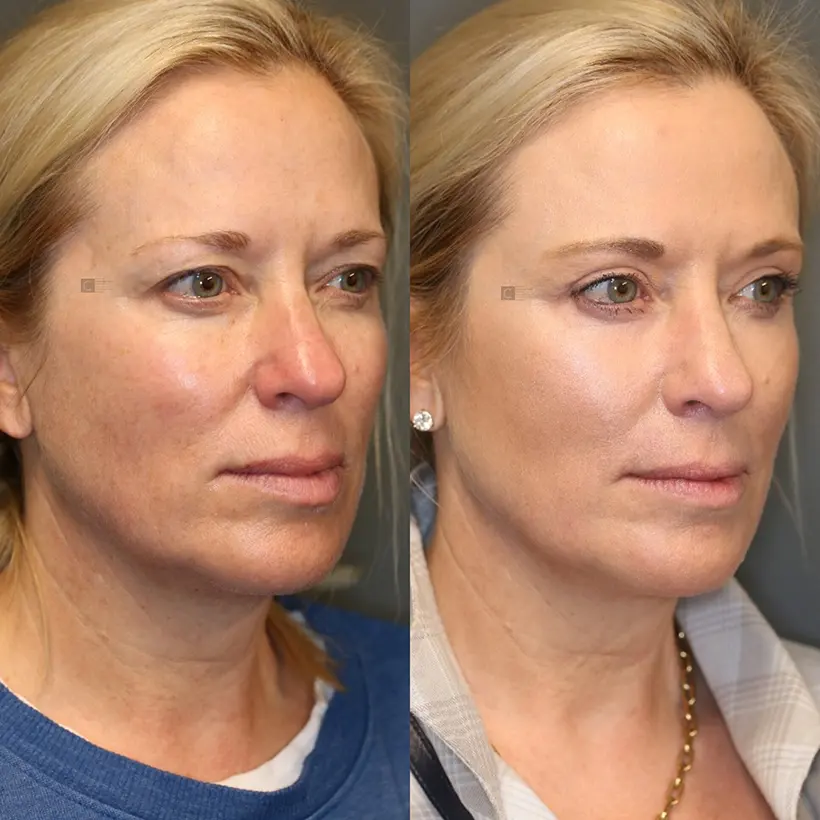Type and hit Enter to search
Experts in aesthetic surgery, dermatology, and beauty bring you the latest trends, research, and advice to help you make informed decisions about your appearance and health.
A web platform dedicated to aesthetic surgery, dermatology, and beauty, where expertise meets innovation, and your desires and needs become our mission. In a world where appearance and health go hand in hand, our platform leads the revolution, delivering the latest trends, research, and expert advice directly to you.
Our team consists of highly skilled professionals in the fields of aesthetic surgery and dermatology, committed to providing reliable information and guidance that will help you make informed choices about your appearance and well-being. We understand that every individual has unique needs and desires, which is why we approach each person with the utmost care and professionalism.
Powered by Aestetica Web Design © 2024
Testing Aesthetic 1
Remember that scene in Her where Joaquin Phoenix falls for an AI? That’s kind of how 2025 feels—only now, the AI's got cheekbones, and it's probably your dermatologist. New trends in plastic surgery aren’t chasing perfection; they’re whispering it. Think bioengineered fat, platelet potions, and skin-lifting threads so fine they might’ve been designed by NASA. This isn’t about becoming someone else—it’s about versioning yourself in 8K. Aesthetic evolution is no longer a luxury—it’s a quiet revolution. Welcome to the era where looking untouched is the ultimate touch-up.
In this article
From Sci-Fi to Selfies: New Trends in Plastic Surgery Meet the Metaverse
Plastic surgery has dramatically evolved in recent years. No longer just about drastic transformations, today’s aesthetic procedures prioritize subtle, natural results and overall well-being. Patients are increasingly opting for procedures that enhance their appearance without making it obvious they’ve had work done. With innovations in technology and a growing interest in holistic beauty, 2025 is shaping up to be a revolutionary year in the field of cosmetic enhancement.
Shift Toward Natural-Looking Enhancements
Celebrity Influence on Subtle Aesthetics
Gone are the days when overfilled lips and exaggerated cheekbones ruled the red carpet. Celebrities like Zendaya and Emma Watson have helped shift beauty standards toward authenticity. Their choices have inspired many to seek procedures that maintain their natural features while subtly enhancing their beauty. This shift is also driving demand for treatments that refresh the face without altering its core identity.
Customized Facial Balancing Techniques
Today’s plastic surgeons focus on harmony and proportion. Rather than simply enlarging or reducing a feature, they aim to balance the face. Advanced digital imaging and facial mapping now guide practitioners in creating custom treatment plans that consider each patient’s unique bone structure, skin quality, and aesthetic goals. The result? Enhancements that are virtually undetectable but remarkably effective.
Minimally Invasive Procedures Gaining Momentum
As technology advances, patients are increasingly choosing less invasive treatments that offer fast results with minimal downtime.
Non-Surgical Nose Jobs (Liquid Rhinoplasty)
One of the standout innovations is the liquid rhinoplasty. Using dermal fillers like hyaluronic acid, doctors can reshape the nose without a scalpel. It’s quick, relatively painless, and requires no anesthesia or recovery time. Ideal for small adjustments, this procedure is perfect for those hesitant about going under the knife.
Thread Lifts for Skin Tightening
Thread lifts use dissolvable threads to subtly lift sagging skin, especially around the cheeks, jawline, and neck. It’s a less invasive alternative to a facelift and can be done during a lunch break. With results that improve over time due to collagen stimulation, thread lifts are gaining popularity among people in their 30s and 40s.
Botox and Fillers with Advanced Formulas
The latest generation of injectables delivers more precise and natural outcomes. These formulas adapt to facial expressions, ensuring that patients don’t end up with a frozen or artificial look. New techniques like micro-dosing also help target fine lines while preserving facial movement.

Regenerative Aesthetic Treatments
2025 marks a new era where plastic surgery intersects with regenerative medicine.
Platelet-Rich Plasma (PRP) for Skin Rejuvenation
PRP treatments, often called “vampire facials,” harness a patient’s own blood to promote collagen production and skin healing. It’s particularly effective for reducing fine lines, acne scars, and dullness. The procedure is minimally invasive and uses the body’s own healing abilities, making it a favorite among natural beauty enthusiasts.
Stem Cell-Enriched Fat Transfer
This technique involves harvesting fat from one part of the body, enriching it with stem cells, and injecting it into areas that need volume—like the cheeks, lips, or hands. It offers dual benefits: contouring and rejuvenation. Unlike traditional fillers, the results are more enduring and biologically compatible.

Body Contouring with Precision
Modern body contouring techniques now provide more sculpted, natural results than ever before.
High-Definition Liposuction
Unlike traditional liposuction, HD lipo targets specific fat layers to accentuate natural musculature, especially in the abdomen, arms, and thighs. This procedure helps create a toned, athletic appearance without looking “overdone.”
Non-Surgical Body Sculpting (e.g., CoolSculpting)
CoolSculpting and similar devices use cryolipolysis or radiofrequency to break down fat cells non-invasively. These procedures are popular because they require no incisions, anesthesia, or recovery time, yet still offer measurable results over several weeks.
Smart Technologies and AI Integration
Technology is transforming how plastic surgery is planned and performed.
3D Imaging for Procedure Planning
3D simulation tools now allow patients to visualize their results before surgery. Surgeons use this technology to communicate realistic outcomes, manage expectations, and design personalized plans.
AI in Diagnosing Skin and Facial Symmetry
Artificial intelligence is being used to analyze facial proportions, symmetry, and skin conditions. This helps doctors make precise recommendations and enhances the personalization of treatments, leading to better results and higher patient satisfaction.
Gender-Affirming and Inclusive Surgeries
Plastic surgery is becoming more inclusive, catering to diverse gender identities and body types.
Facial Feminization and Masculinization
These procedures help transgender and nonbinary individuals align their appearance with their gender identity. Surgeons use subtle yet effective techniques to adjust facial features, such as jawline contouring, brow lifts, and lip reshaping.
Inclusive Beauty Standards in Aesthetics
Surgeons now celebrate a wider range of facial and body aesthetics. There’s growing acceptance of ethnic diversity and cultural preferences in how beauty is defined and achieved, reflecting a more global approach to plastic surgery.
Eco-Conscious Practices in Plastic Surgery
Sustainability is making its way into the surgical suite. Clinics are reducing waste, using eco-friendly sterilization methods, and sourcing sustainable materials for implants and instruments. There’s also a rise in virtual consultations, which minimize travel and carbon footprint.
Risks and Ethical Considerations
With the surge in popularity of aesthetic procedures comes the responsibility to practice ethically. Surgeons must ensure patients are psychologically prepared, fully informed, and not pressured by unrealistic beauty standards. Overuse of injectables and unqualified providers remain significant concerns, underlining the need for patient education and regulation.
Future of Plastic Surgery Innovations
Looking ahead, we can expect even more personalized, tech-enhanced procedures. Developments in gene editing, bioprinting, and smart implants may redefine what’s possible in aesthetic medicine. As these innovations emerge, the emphasis will remain on safety, natural results, and holistic beauty.
Frequently Asked Questions (FAQs)
1. What is the most popular plastic surgery trend in 2025?
Minimally invasive treatments like thread lifts and liquid rhinoplasty top the charts due to their quick results and minimal downtime.
2. Are regenerative treatments like PRP safe?
Yes, PRP uses your own blood, making it safe with minimal risk of allergic reaction or infection.
3. Can natural-looking results really be achieved through plastic surgery?
Absolutely. With skilled surgeons and modern techniques, subtle enhancements that maintain facial harmony are very achievable.
4. How long do non-surgical procedures last?
Most last between 6 to 18 months, depending on the treatment and individual factors like metabolism and lifestyle.
5. Are these procedures affordable?
Costs vary widely. Non-surgical options are generally less expensive upfront than traditional surgery but may require more frequent maintenance.
6. How do I choose the right surgeon for a natural look?
Look for board-certified professionals with a portfolio of natural results and good patient reviews. Consultations are key.
SOURCES:
What’s on the horizon? Plastic surgery trends for 2025 | ASPS, Plastic Surgery Trends of 2025: A Shift Toward Natural Results, Facial Surgery Trends 2025: Innovation and Natural Results, How Advances in Technology Are Revolutionizing Plastic Surgery, Emerging Technologies and Innovations in the Future of Plastic Surgery, Trends in Surgical and Nonsurgical Aesthetic Procedures – PubMed, Global Survey 2023: Full Report and Press Releases – ISAPS


